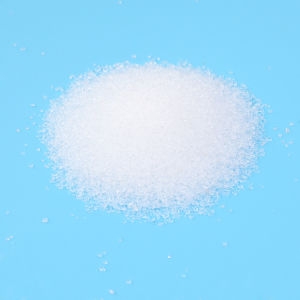Acidity Regulators Market Report Is Going To Boom Worldwide with Industry Growth and Top PlayersPosted by Pearl Smith on March 13th, 2023  Acidity regulators, also known as pH regulators or acidulants, are food additives that are used to regulate the acidity or alkalinity of food products. They are commonly used in the food industry to control the flavor, texture, and shelf life of various food products. Some common acidity regulators include: ★ Citric acid: This is a natural acid found in citrus fruits such as lemons, limes, and oranges. It is commonly used in carbonated beverages, fruit-flavored drinks, and fruit products. ★ Acetic acid: This is a natural acid found in vinegar. It is commonly used in pickled foods, sauces, and condiments. ★ Lactic acid: This is a natural acid found in milk and fermented products such as yogurt and sour cream. It is commonly used in cheese, baked goods, and meat products. ★ Malic acid: This is a natural acid found in fruits such as apples and grapes. It is commonly used in fruit-flavored beverages and candy. ★ Tartaric acid: This is a natural acid found in grapes and other fruits. It is commonly used in wine, fruit juices, and baking powders. Acidity regulators are generally considered safe when used in the recommended amounts. However, excessive consumption of acidic foods and beverages can lead to dental erosion and other health problems. It is important to maintain a balanced diet and consume acidic foods in moderation. Key players are consistently improving their product portfolio in acidity regulator market. Some of the major companies operating acidity regulator market are Archer Daniels Midland Company (Wild Flavors), Cargill Incorporated , Tate & Lyle Plc, Junbunzlauer, ATP Group, Celrich Products Pvt Ltd, Chemelco International B.V., F.B.C Industries Inc., Fuerst Day Lawson Ltd., Bertek Ingredient Incorporation, and Mylan N.V among others. The Asia Pacific region is expected to be the largest market for acidity regulators, with increasing demand for processed foods and beverages in countries such as China, India, and Japan. North America and Europe are also expected to see significant growth due to the increasing demand for convenience foods and the use of acidity regulators in the food and beverage industry. The acidity regulators market is expected to grow in the coming years due to the increasing demand for processed foods and beverages, which often require acidity regulators to control their pH levels and improve their flavor and shelf life. The growth of the food and beverage industry, particularly in emerging economies, is expected to drive the demand for acidity regulators. In addition, the rising trend of clean label and natural food ingredients is also expected to contribute to the growth of the acidity regulators market. Many consumers are becoming more conscious of the ingredients in their food and are looking for natural alternatives to synthetic acidity regulators. Furthermore, the use of acidity regulators in various industries beyond food and beverages, such as pharmaceuticals, cosmetics, and personal care, is also expected to drive the growth of the market. The COVID-19 pandemic has also had an impact on the acidity regulators market, with disruptions in supply chains and changes in consumer behavior affecting demand. However, the market is expected to recover as the pandemic subsides and economic activity resumes. The demand for acidity regulators is expected to increase in the coming years due to the growing consumption of processed foods and beverages. Acidity regulators are commonly used in the food and beverage industry to improve flavor, texture, and shelf life, and to maintain the pH level of the product. The increasing demand for convenience foods, such as ready-to-eat meals and snacks, is expected to drive the demand for acidity regulators, as these products often require the use of acidity regulators to ensure product safety and stability. In addition, the rising trend of clean label and natural food ingredients is also driving the demand for natural acidity regulators, such as citric acid and lactic acid, which are perceived to be healthier and safer alternatives to synthetic acidity regulators. The demand for acidity regulators is also increasing in emerging economies, such as India, China, and Brazil, due to the growing middle-class population and the increasing consumption of processed foods and beverages. The use of acidity regulators in the food and beverage industry provides several benefits, including: 1. Improved Flavor: Acidity regulators can enhance the flavor of food products by adding a sour or tangy taste that is desirable in many food products. 2. Shelf Life Extension: Acidity regulators can help preserve food products by preventing the growth of bacteria and other microorganisms, thereby extending their shelf life. 3. pH Control: Acidity regulators can help maintain the pH level of food products, which is important for product safety, stability, and texture. 4. Cost-effective: The use of acidity regulators is often more cost-effective than other methods of preserving and enhancing the flavor of food products. 5. Natural alternatives: Many acidity regulators are derived from natural sources, such as citric acid from citrus fruits and lactic acid from milk, making them a preferred choice for consumers who are looking for natural alternatives to synthetic ingredients. Overall, the use of acidity regulators provides several benefits to the food and beverage industry, including improved flavor, extended shelf life, and cost-effectiveness. They also offer a natural alternative to synthetic ingredients, which is important for meeting consumer demand for clean label and natural food ingredients. Like it? Share it!More by this author |


